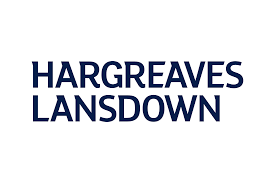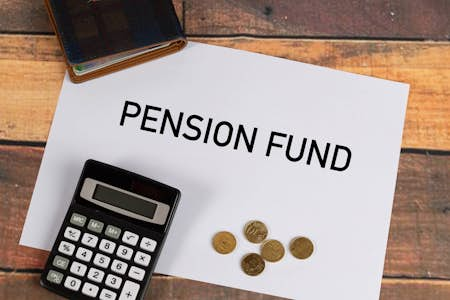The relatively common but unhelpful answer to this question is, it differs. However, we have collated all of the information you will require to plan ahead for that comfortable retirement. No ifs, no buts, just straightforward information presented in a simple manner. So, where do we start?
Maximise your retirement fund with our panel of pension providers. Click on your chosen provider to get started!
What kind of lifestyle can you afford in retirement?
While many people will initially target the kind of lifestyle they would like to live in retirement, financial reality can differ. The first thing to do is identify the cost of a basic, moderate and comfortable retirement. The Pensions and Lifetime Savings Association (PLSA) created an invaluable in-depth review into “Retirement Living Standards." This information establishes a basis for developing your particular aspirations for retirement and how to cost these. Priceless!
The headline figures to fund a basic, moderate and comfortable retirement for a single individual are as follows:
| Level of Retirement | Annual Income Requirement (Net) | Standard of Living |
| Basic | £10,200 | Covers all basic living expenses, with minimal leftover for socialising |
| Moderate | £20,200 | An enhanced degree of financial security and greater flexibility on spending |
| Comfortable | £33,000 | Greater financial freedom and funding for several luxuries |
Note: These figures are based upon living expenses outside of London
If you have researched the cost of retirement, you will be well aware that the devil is in the detail. However, you can see from the PLSA research the annual income required to fund the three different levels of retirement.
General assumptions
Before we look at the annual income requirements in more detail, it is important to note several basic assumptions used in calculating these figures. Depending upon your situation, you may have additional costs to take into consideration, such as:
- Mortgage/rent
- Social care costs
- Tax and pension income
- Dependents
- Personal loans
- Medical expenses
On further reflection, these assumptions make perfect sense. For example, many people retiring today would be part of the "baby boomers" era, which saw a significant increase in the value of their home. Many will be mortgage and rent-free, have seen their children fly the nest and are unlikely to have any dependents. However, the report does take into account costs relating to:
- Repair and maintenance of your home
- Food and drink budgets
- Transport
- Holidays/leisure expenditure
- Clothing and personal goods
- Helping others
Many people will be surprised to learn the annual income required to live a basic, moderate and comfortable lifestyle in retirement. As we begin to delve deeper into the figures, many other surprises will emerge. By introducing a degree of forward planning, you may be able to fund that dream retirement lifestyle after all!
Standards of retirement
We will now attempt to put some meat on the bone when it comes to the cost of funding a basic, moderate and comfortable retirement lifestyle. However, first of all, we need to take a look at state pension payments and annuity rates.
New state pension
The new state pension is £179.60 per week, although this would require the maximum number of qualifying years. When using state pension payments as part of our income calculations, we will err on the side of caution and use a figure of £150 per week (£7800 per annum).
Annuity rates
If we use standard annuity rates of £4,600 per £100,000 investment, this gives us a basis on which to calculate additional pension income requirements. While there are various options, including drawdown and deferred income, using a basic annuity rate again errs on the side of caution.
Basic standard of retirement
The following criteria were used to calculate the cost of a basic standard of retirement with no luxuries.
Annual income requirement: £10,200 (net)
Gross equivalent: £10,200
| Expenditure | Criteria Used |
| Home | Cost of DIY maintenance and the decorating of one room a year |
| Food & Drink | Weekly food shopping expenses of £38 |
| Transport | No vehicle |
| Holiday/leisure | Annual holiday of a week and a long weekend away in the UK |
| Clothing/personal | £460 expenditure on clothing/footwear per annum |
| Gifts | £460 expenditure on clothing/footwear per annum |
At first glance, it may seem challenging to create an income stream of £10,200 (net) in retirement. However, once you begin to break down the figures and include the state pension, it is not as daunting.
Breakdown of net income requirement:
| Net income required | £10,200 per annum |
| State pension payments | £7800 per annum |
| Personal pension payments | £2400 per annum |
In this scenario, if the shortfall of £2400 per annum is paid via an annuity, you would require a pension fund of just over:
- £52,000
The current tax-free personal allowance in the UK is £12,570; therefore, you would pay no tax on income of £10,200 per annum.
At this point it is worth noting the difference in income tax bands between Scotland and the rest of the UK. The rates for the tax year 2021/22 are as follows:
| Tax Band | Rest of UK | Tax Rat | Scotland | Tax Rate |
| Personal Allowance | Up to £12,570 | 0% | Up to £12,570 | 0% |
| Starter Rate | n/a | £12,571 to £14,667 | 19% | |
| Basic Rate | £12,571 to £50,270 | 20% | £14,668 to £25,296 | 20% |
| Intermediate Rate | n/a | £25,297 to £43,662 | 21% | |
| Higher Rate | £50,271 to £150,000 | 40% | £43,663 to £150,000 | 41% |
| Top Rate | Over £150,000 | 45% | Over £150,000 | 46% |
Moderate standard of retirement
The criteria used to calculate a moderate standard of retirement includes additional expenditure and some luxuries.
Annual income requirement: £20,200 (net)
Gross equivalent: £23,300
| Expenditure | Criteria Used |
| Home | Paid assistance for maintenance and decorating the home |
| Food & Drink | A weekly food shopping budget of £46 |
| Transport | Possession of a three-year-old vehicle which is replaced every ten years |
| Holiday/leisure | A long weekend in the UK and two European trips per annum |
| Clothing/personal | Expenditure of £750 on clothing/footwear |
| Gifts | £30 per birthday present |
The higher the required annual income, the more significant the shortfall as the state pension rate remains constant. For those looking to fund a moderate standard of retirement, the figures are as follows.
Breakdown of net income requirement:
| Net income required | £20,200 per annum |
| State pension payments | £7800 per annum |
| Personal pension payments | £12,400 per annum |
In this scenario, the first £12,570 would be free of tax with additional income of £7630 taxed at the basic rate of 20%. To receive a net £12,400 per annum from your pension pot, this would require a gross income of £14,308 per annum. Using an annuity rate of 4.6%, you would need a pension pot on retirement of:
- £311,000
The cost of funding a moderate and luxury retirement lifestyle is a little more complicated than the basic equivalent. The issue of income tax and pension income above your tax-free personal allowance will have a growing impact on the level of gross income required.
Luxury standard of retirement
As you would expect, the expenses used to calculate a luxury standard of retirement are significantly greater than those for both basic and moderate lifestyles.
Annual income requirement: £33,000 (net)
Gross equivalent: £38,108
| Expenditure | Criteria Used |
| Home | Kitchens and bathrooms replaced every 10/15 years |
| Food & Drink | Weekly food shopping expenses of £56 |
| Transport | Two-year-old vehicle replaced every five years |
| Holiday/leisure | Three weeks spent holidaying in Europe each year |
| Clothing/personal | Combined expenditure of between £1000 and £1500 per annum |
| Gifts | Cost of birthday gifts, £50 each |
If we assume an annual state pension of £7800, this leaves a net income shortfall of £25,200 per annum. When taking into account income tax, the calculations are as follows:
Breakdown of net income requirement:
| Net income required | £33,000 per annum |
| State pension payments | £7800 per annum |
| Personal pension payments | £25,200 per annum |
As the first £12,570 in income is free of tax, this leaves an additional £20,430 net income requirement, which is susceptible to income tax at 20%. Therefore, to meet your net annual income requirements, your pension annuity would need to create a gross income stream of £30,308 per annum. Using an average annuity rate of 4.6%, this equates to a pension pot valued at:
- £659,000
As you can see from the figures, there is a significant hike in the pension pot required to fund a luxury retirement, compared to basic and moderate levels. It is vital to take advice about your tax situation and appreciate that tax rates and tax allowances may be susceptible to change.
Calculating pension fund requirements
As the tax-free personal allowance traditionally increases annually (although it was recently frozen for four years by the Chancellor), more of your gross pension annuity income will be shielded from income tax going forwards. To explain how we work out the gross pension annuity requirements, let us take the figures relating to the luxury lifestyle.
| Net income required | £33,000 per annum |
| State pension payments | £7800 per annum |
| Personal pension payments | £25,200 per annum |
In this scenario, £12,570 of the required income will be shielded from income tax. As a consequence, we need to calculate the gross equivalent required to create an additional £20,430 (adding up to the £33,000 net annual requirement):
Net figure required: £33,000
Element shielded from tax: £12,570
Element susceptible to tax: £20,430
When working out the gross pension fund income required, we also need to consider the element shielded from tax as part of your tax-free allowance. The calculation is as follows:-
Gross element required: £25,538
Income tax at 20%: £5108
Net equivalent payment: £20,430
This equates to the £33,000 net income required per annum:-
State pension: £7,800
Pension payment shielded from income tax: £4770
Additional gross pension payment: £25,538
Total gross payment: £38,108
Less tax: £5108
Total net income: £33,000
When acquiring an annuity, the payment would be fixed at the date of purchase or increase in line with inflation. Thankfully, once the recently announced four year freezing of the tax-free allowance comes to an end, more of your income will be shielded from income tax.
Pension drawdown income
Under current pension regulations, there is no requirement to acquire an annuity - with more people choosing the pension drawdown option. This allows for greater flexibility as you can withdraw a regular income from your pension scheme, while the uncrystallised element of your fund remains invested. As a consequence, there is the potential to benefit from further long-term capital appreciation.
Traditionally, many people will take on a more "conservative" investment strategy when considering the pension drawdown option, as they approach retirement. This may involve switching part or your entire pension fund into less volatile investments such as bonds. It is essential to consider your pension fund investment strategy as part of your annual financial review.
When should you start your pension contributions?
The sooner you begin your pension fund contributions and consider the tax benefits, the greater the potential for long-term capital growth. In reality, you may have limited income available for pension fund contributions as you take your first steps on the employment ladder. However, a long-term increase in your employment income should reduce living expenses as a percentage of your overall income, leaving more capital for pension contributions.
Whether you choose a personal pension scheme or have the option of joining an employer pension scheme, it is crucial to take professional financial advice. While there is no set rule as to what age you should begin pension contribution, the sooner you start, the more potential for long-term capital growth. It may be that you decide to make relatively small contributions in the early days, increasing payments as your lifestyle allows.
How much does a single person need to retire?
While there is no hard and fast rule when it comes to pension fund contributions, the greater your pension pot, the higher your long-term income in retirement. The above figures are indicative, as additional costs such as rent/mortgage payments, personal loans, and other expenses would need to be taken into account. It is also essential to appreciate the tax-free income allowance and its impact on the gross income figures.
We have seen some considerable changes in pension regulations in recent years, many of which have given greater flexibility to those in or approaching retirement. As a consequence, you must seek professional financial advice. Your pension fund arrangements should be considered as part of your annual financial review.







